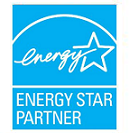


|
"There is a little more to it than what first meets the eye, for us to say continually using high levels of chlorine bleach in a pool is good advice." "The bottom line is, why use chlorine bleach to manage algae if it can be better managed by using more environmentally friendly methods?" |
Using Chlorine Bleach to Control (Kill) Algae in Swimming PoolsSome of the leading pool experts are advocating that pool owners should use standard household Chlorine Bleach (5.25% sodium hypochlorite) as a method to control algae, along with keeping the chlorine at "shock" levels (over 10ppm) for extended periods of time. While this makes better economical sense than paying for expensive "pool chlorine" which is simply a higher concentration solution, there is a little more to it than what first meets the eye, for us to call this "good advice". Let's take a closer look at the problem. First of all, all pool owners know that they must backwash their system from time to time. This means that a considerable amount of water is discharged either to public waste systems, or even worse, directly into groundwater supplies. If your drinking water source is from a private well, and you dump your pool water waste on your property, we HIGHLY recommend that you do not use this method, or you could risk contaminating your well! Here's a good article to review if you are skeptical about how bad chlorine actually is for you: Speaking About the Dangers of Chlorine Industries are closely monitored by the EPA on how much chlorine they discharge as wastewater. Why is this? It is because it is known that chlorine can have very harmful effects to our environment. Discharges of this type often contain high levels of Trihalomethanes (THMs), something pool owners currently do not have to monitor in their pools, however strict guidelines have been established by the EPA regarding THM's in drinking water. Click here for more enlightenment concerning THM's. What you read and learn will no doubt be concerning (or even shocking) to you as a pool owner. You will find that THM's are the "dirty little secret" of the pool and spa industry. They just simply do not like to talk about it, as it could be very bad for business. THM's are created as byproducts of disinfection systems using chlorine. THM's are found to be very harmful to humans, and are listed as some of the highest (top 10) threats as carcinogens. The worst thing about it is that THM's are easily absorbed by humans through the skin. This means that swimming in water with high THM levels may actually be worse for you than drinking it!
Q: So why doesn't the EPA have guidelines on THM's in pool water? A: Great question. Q: Why don't pool test kits include testing for THMs so I can at least know what the level is in my pool? A: Another great question. Testing for THMs is quite costly and can not be done (as far as we know) with low cost user "test kits" available on the market. If someone offers this product at low cost, we would be happy to provide it to our clients. Here is a link to one THM test kit offered by Hach. At over $400 per test kit, we don't think many domestic pool owners will run out and buy one... Q: If I use bleach in my pool to control algae, with this increase THM levels? A: Yes, most certainly. THMs are a byproduct reaction of chlorine on biomatter. It doesn't matter whether you use "bleach" or "pool chlorine" to shock a pool, (except from a cost standpoint) because either way THM levels will skyrocket. Once the chlorine levels are brought back down to normal levels (1.5 to 3.0 ppm), the algae is likely to return anyway. The fact of the matter is that if every pool owner in the USA started using shock levels of chlorine bleach for extended periods of time as the method to control algae in their pool, millions of gallons of additional contaminated water would be discharged into our environment. The effects of this would no doubt be devastating to the environment, and public health. There is no denying this fact. Exactly how bad it would be would make a great study. We are quite certain that pool owners do not want to intentionally damage the environment. We believe that most pool owners just want to maintain their pools the best way they can, and know how. Chemical companies are in business to sell chemicals. They have no problem promoting the idea that using their products is the only way to maintain pools. Up until now, unfortunately, this was in fact mostly true. Now, with the availability of new emerging technologies, pool owners DO have a choice. A choice which makes both good economic and good environmental sense. So, what new technologies can help pool owners?
Conclusion Do we think that the pool experts are trying to promote damage to our environment? No, we are quite sure that they are simply trying to help people deal with algae in the most cost effective manner thought available, however their guidance is somewhat short-sighted as far as our environment is concerned. Using chlorine bleach to control algae may be more of an ethical problem than an economical one, however when one thinks about the long-lasting consequences, it must be considered. When you think about the fact that the average homeowner only discharges a couple cups of bleach a day into our wastewater systems, typically by doing laundry, being a pool owner gives us additional responsibilities we must be aware of, which impacts our environment as a whole. The bottom line is, why use bleach to manage algae if it can be better managed by using environmentally friendly methods? |
Copyright © 2003-2009 ECMI